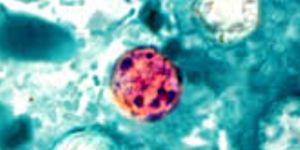Preventing Aging by Protecting Ribosomes
As time and exposure to the elements wear organisms down and at the cellular level a gradual deterioration occurs, aging happens. Scientists have now learned more about a protein that helps protect cells from senescence, the loss of vitality and reduction in growth that accompanies the degradative processes of aging. The protein, SIRT7, can help shield a group of vulnerable genes from damage. This work, by researchers at the VA Palo Alto Health Care System (VAPAHCS), has been reported in the Journal of Biological Chemistry.
Proteins are essential components of tissues and organs and are critical parts of the cell that are often in high demand. That makes ribosomes, the protein-making factories of the cell, extremely important and well-used. There tend to be many copies of the genes that encode for the ribosome, and many of those genes remain silent until they are needed. If genes that normally code for the ribosome become damaged or unstable, the backup genes can kick in and start doing their job. That redundancy is critical because the DNA encoding for ribosomes (rDNA) often becomes rearranged and mutated.
"Ribosomal DNA is one of the major hotspots for instability in the genome," explained the leader of this research, Silvana Paredes.
In the lab of Katrin Chua, which is associated with both Stanford and the Geriatric Research Education and Clinical Center at the VAPAHCS, the researchers investigated the connections between rDNA, aging, and the SIRT7 protein. Normally, SIRT7 acts to change histones, which help DNA organize properly; that allows the right parts of the genetic material to be exposed at the correct times, activating the proper genes. Paredes discovered that SIRT7 was critical to the regulation of rDNA; it keeps portions of it turned off.
If SIRT7 is removed from a cell, the scientists found that rDNA genes suffer damage; they stop dividing and show signs of aging. That indicates that SIRT7 is critical to preventing age-related cellular deterioration. In disorders like diabetes, arthritis, cancer, heart disease, and neurodegeneration, cells that are senescent (exhibiting the signs of aging) tend to accumulate. Removing those cells could have a therapeutic effect. Finding a way to keep SIRT7 active may also help researchers maintain cellular health.
"By identifying rDNA instability as an underlying trigger of senescence of human cells and demonstrating the central role of SIRT7 in protecting against this process, our studies not only provide important insights into basic mechanisms of aging but also identify potential molecular targets for aging-related disease processes," Chua concluded.
This video from the Mayo Clinic briefly describes an unrelated study in which scientists removed senescent cells from mice, and saw a dramatic lengthening of the lifespan of those research models.
Sources: AAAS/Eurekalert! Via American Society for Biochemistry and Molecular Biology, Journal of Biological Chemistry









